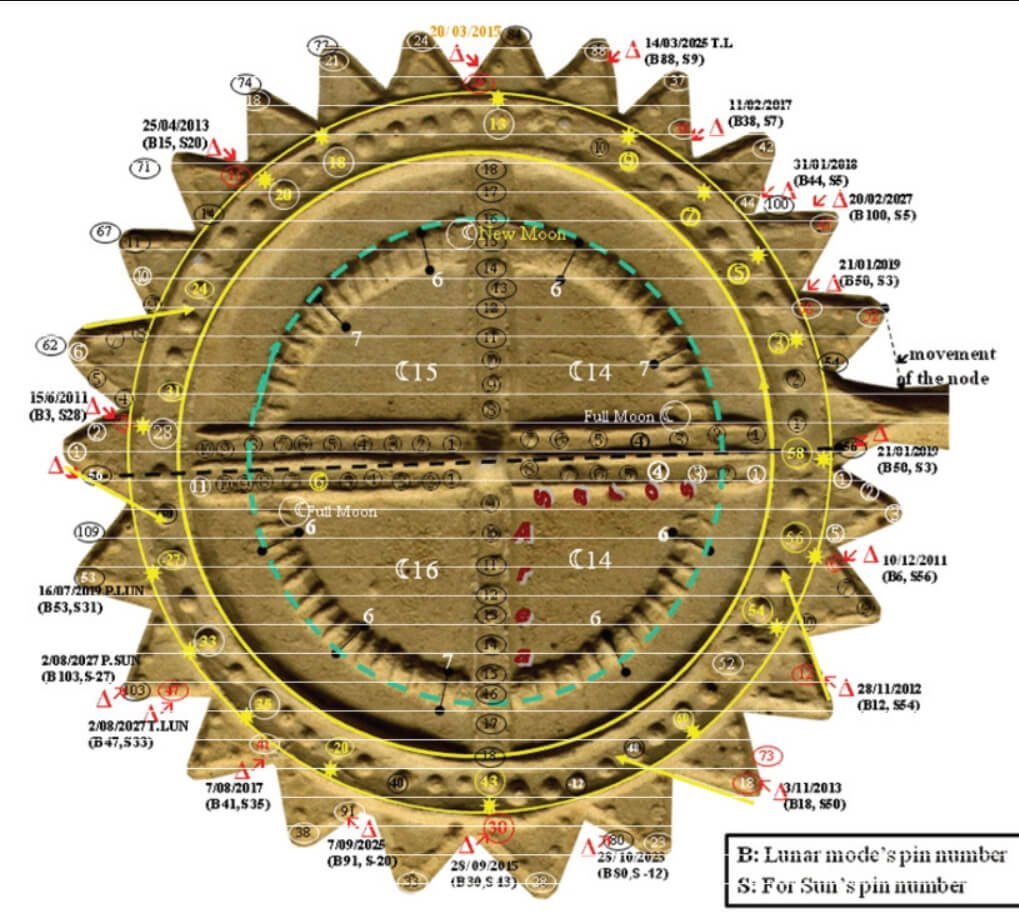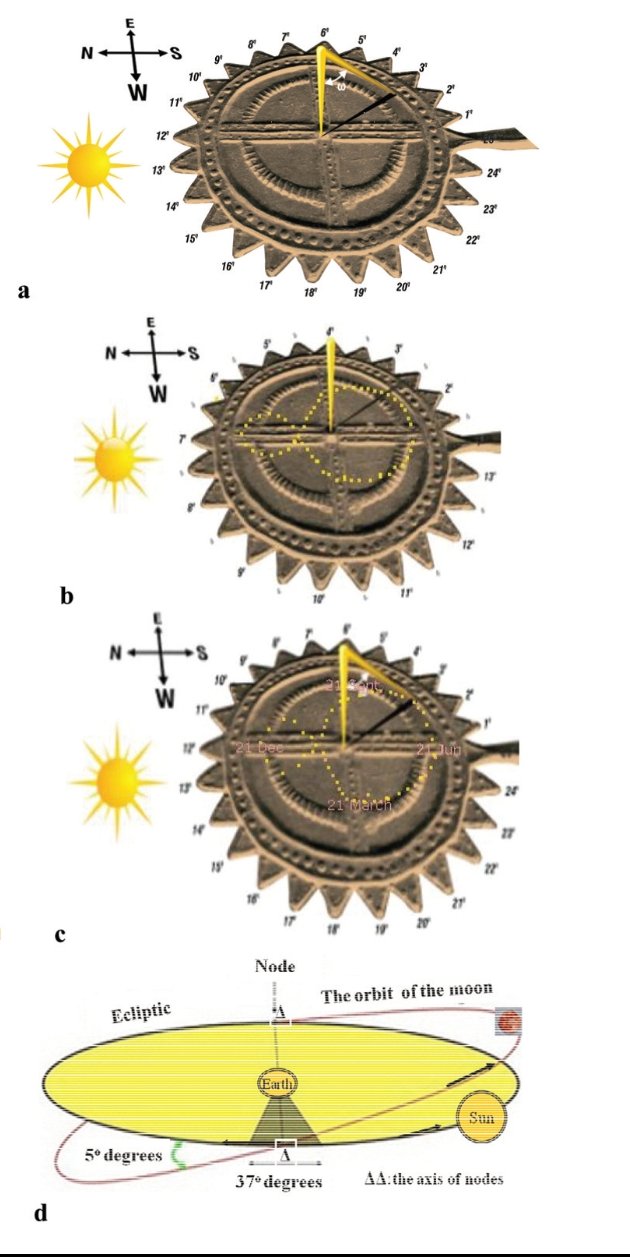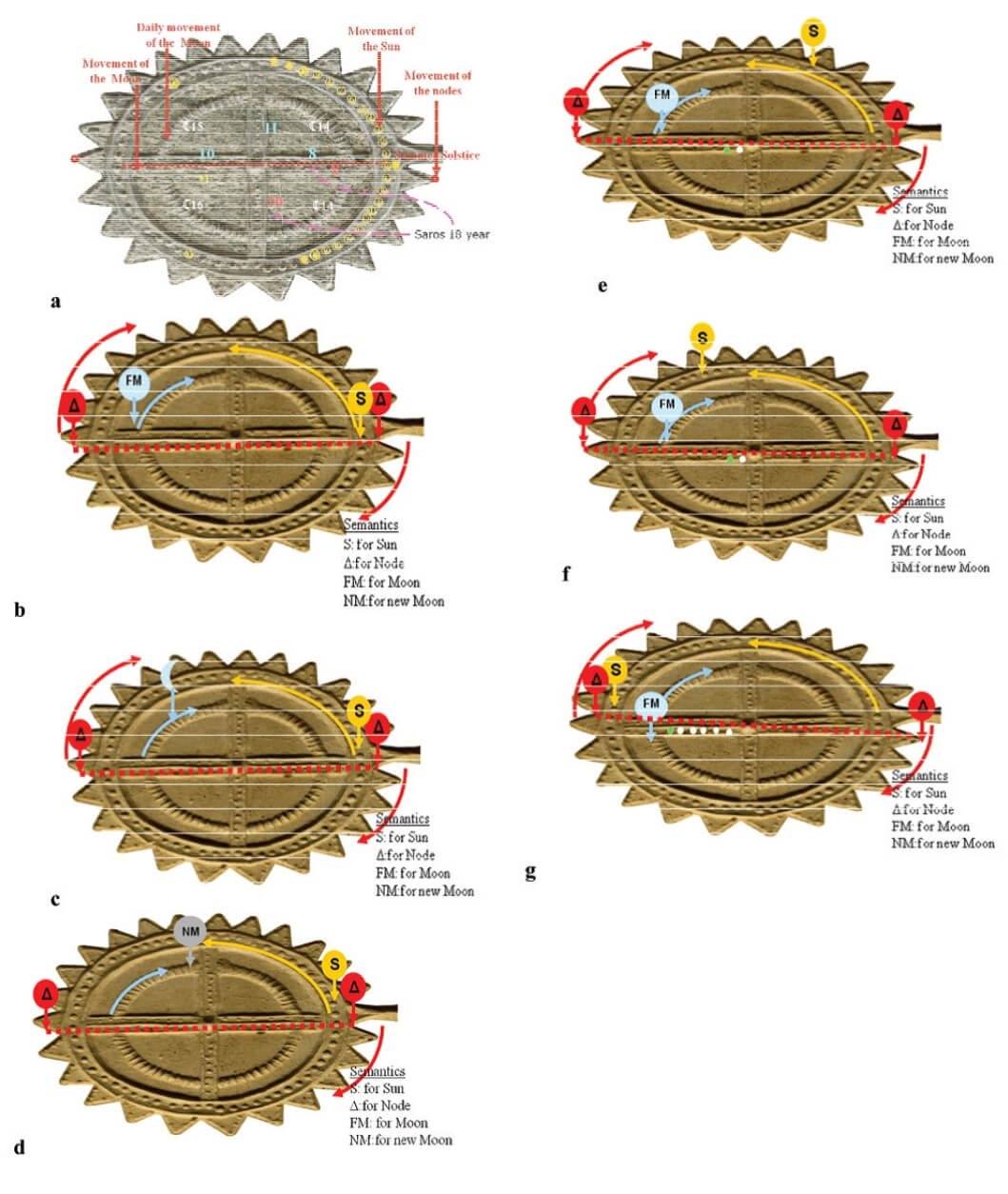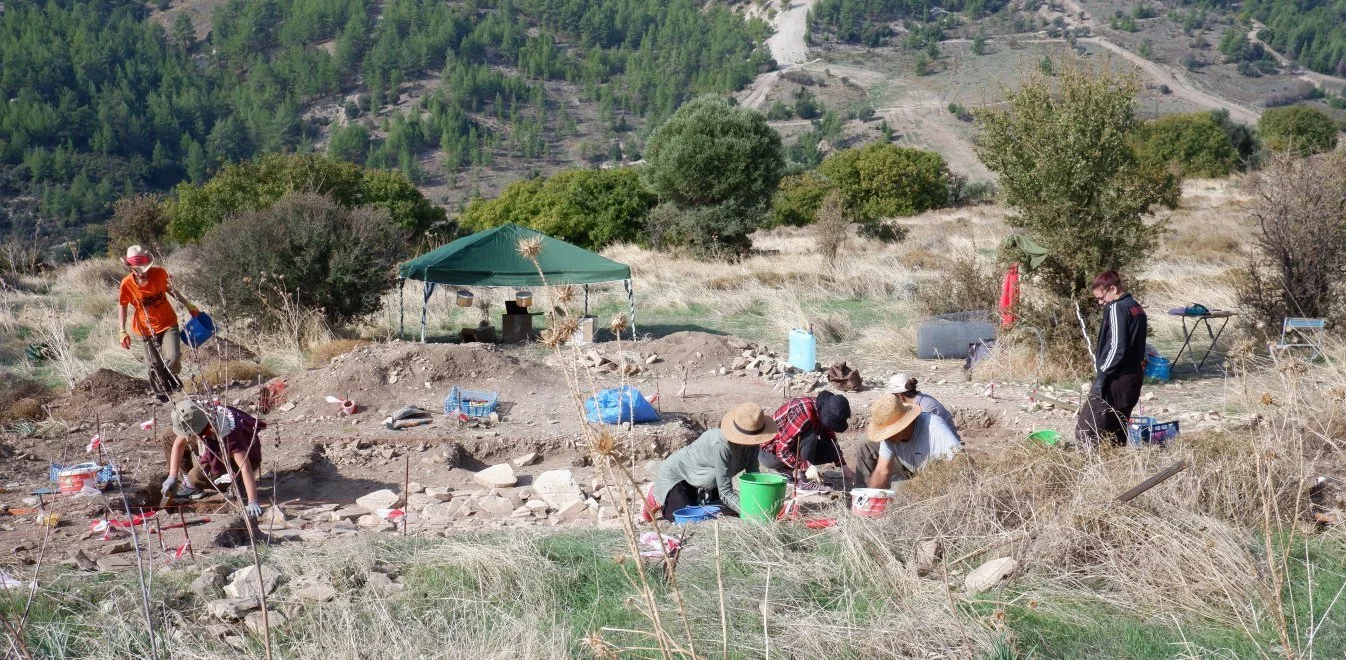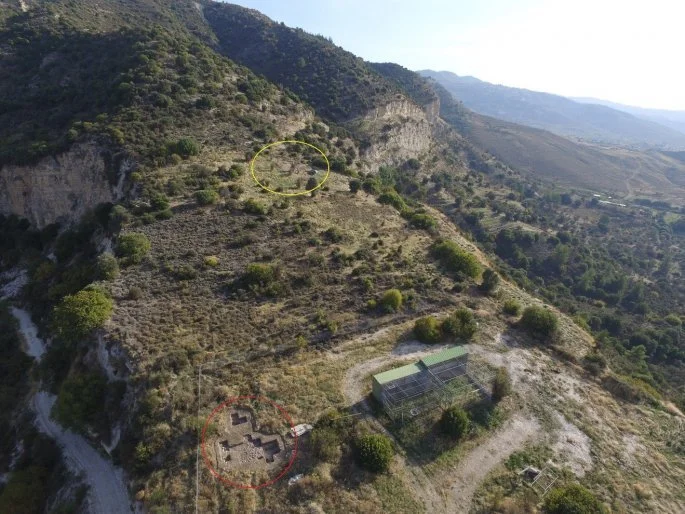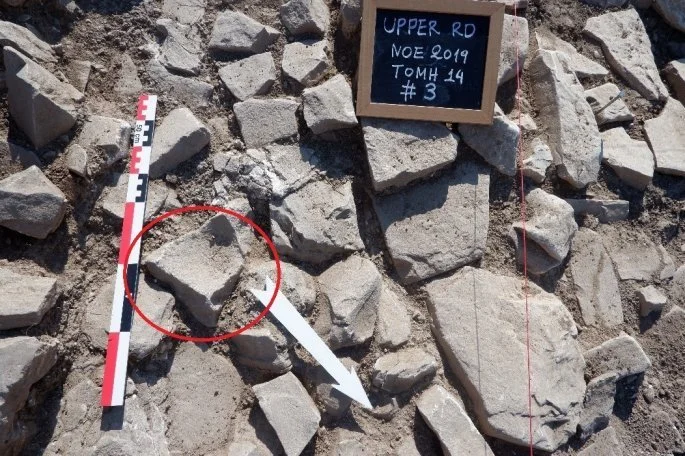In today’s video we will analyze the most terrifying prehistoric creatures. Watch the video and enjoy!
What is the Epimenides' Sleep? - The incredible story of the famous sage Epimenides
One of the most amazing, but also paradoxical stories from the time of ancient Greece is undoubtedly the story of Epimenides.
Both the concept of the cave and the concept of descending into it is not a simple matter, but hides a very serious initiation, connected with the revelation of secrets about life and death. Epimenides, one of the most famous sages who ever lived in Crete, slept in a cave for 57 whole years!
Epimenides is considered one of the most famous sages who ever lived in Crete. He was not only a religious teacher, but also known for his divination and prophetic abilities.
However, perhaps the knowledge of the most important event of his life has been preserved, thanks to which he has remained known until today.
Thus, his father once lost one of his sheep and sent his son Epimenides to the field where the sheep was lost, to look for it and bring it back.
Epimenides actually set out to find the sheep, but it seems that he got confused along the way and instead of reaching the field his father had shown him, he got lost and accidentally entered a cave. Being tired from the search for the sheep, he fell asleep.
What is particularly impressive, however, is that Epimenides slept in this cave for a whole 57 years! The memory of this paradoxical event has been preserved until our days by the proverbial phrase "Epimenides’ sleep".
But our story does not end here.
When Epimenides woke up, he went in search of the sheep again, believing that he had slept only a few hours.
But soon, in the effort of his new searching, he realized to his surprise that during his sleep everything around him had changed, since he could no longer recognize anything of what he knew before falling asleep.
The field had changed hands, even his village was undergoing very large and inexplicable changes, but even as he tried to find his own people, he found that he was no longer where he was before falling asleep.
Very soon Epimenides found that most of the people he knew had already died. Nevertheless, at some point he managed to find his brother, who by now was an old man and explained to him exactly what had actually happened.
Perhaps this event of Epimenides' sleep would not be so important if we did not have an important testimony from Diogenes Laertius.
In his book on Pythagoras, Diogenes Laertius mentions that Pythagoras traveled almost the entire world known at that time in order to come into possession of all the important initiations. On his way of searching the truth Pythagoras also visited Crete to meet Epimenides.
The esoteric knowledge that Epimenides possessed was thus so important that even Pythagoras aspired to be initiated by him and to complete his initiation, when together they descended into the famous "Idaeon andron", the cave where Zeus, the highest of the gods, was born.
The revealing ancient text reads as follows:
...when he was in Crete with Epimenides, he came down to Idaeon andron
...Then (Pythagoras) visited Crete and descended to Idaion Andron accompanied by Epimenides, but also in Egypt to the depths;
but he also visited the shelters of the temples of Egypt.
and learned about the gods in secret.
Thus he learned the secret mysteries about the nature of the gods.
As we can see, Pythagoras shows a special predilection for visiting hidden mystical places in different parts of the planet, which are completely heterogeneous among themselves in terms of their religious beliefs.
With his attitude he proves that the inner initiation is in any case a valuable empirical knowledge necessary for our personal development.
We should add that "Idaion Andron" is a cave on a plateau on Mount Idi (Psiloritis) in Crete, where, according to Greek mythology, Zeus was brought up.
Today it is an important archeological site where excavations have been carried out since 1884 and various objects (archaic statuettes, vials, bronze shields) even from the Minoan period have been discovered.
It is therefore very likely that inside the “Idaion Andron” initiations took place on how to receive a divine education, similar to that of Zeus.
So, one of the results of this "Epimenides sleep" is the revelation of very important hidden secrets related to the understanding of the nature of God.
Undoubtedly, this is the highest knowledge that one can acquire and it can reveal to one the deepest meaning and the ultimate purpose of life, because both the concept of the cave and the concept of descending into it are not one and the same. It hides a very serious initiation, connected with the revelation of secrets about life and death.
Epimenides also became the occasion of a well-known paradox. In one of his poems he had written: "Cretans are always liars".
In the 19th century, on the basis of this sentence, the following logical paradox was formulated, also known as the Epimenides paradox: Epimenides says that all Cretans are liars, Epimenides is a Cretan, therefore Epimenides lies, therefore Cretans tell the truth, therefore Epimenides tells the truth, therefore Cretans are liars, and so on.
Epimenides' phrase was used by the Apostle Paul in his letter to the Bishop of Crete, Titus, to rebuke the Cretans for their errors in the words of one of their own: "A prophet of their own said them; Cretans, you are liars, evil beasts, lazy gluttons." (1:12).
It preceded the Antikythera Mechanism by 1,400 years and is the first analog computer in history
BY THE ARCHAEOLOGIST EDITOR GROUP
The first analog computer in the history of mankind was discovered by the Minoans, according to the Cretan explorer of Aegean scripts, Minas Tsikritsis.
According to the researcher, the Minoan object found in 1898 in the Palaikastro of Sitia predates the "mechanism of Antikythera" by 1,400 years and is the first analog computer in history, and a portable one.
"While searching for Minoan finds with astronomical representations in the Archaeological Museum of Heraklion, we found a stone matrix from the Palaikastro region of Sitia. Stefanos Xanthoudis and Arthur Evans had referred to this matrix and explained that the engraved symbols on the surface of the matrix were related to the sun and the moon," Mr. Tsikritsis points out.
How did it work?
According to the Greek researcher, this matrix was utilized as a matrix for the development of a device that worked as an analog computer for the prediction of eclipses following an initial study of the relief representation of the disc on the right side of the matrix. The mechanism's potential applications as a sundial and a tool for measuring latitude were looked into concurrently.
This construction is able to determine the time and latitude of a place if we use the three tools—two needles and a compass—located in the matrix above the disc.
The disc has 25 triangular shapes around its circumference; if we count them every half hour and place a needle perpendicular to the central dent and align the central cross in the north-south direction, the shadow of the needle will indicate the point on the disc corresponding to the hour of observation. So it seems that this mechanism can be used as a daily sundial (12.5 hours). From this use, it appears that the time corresponds to about 58 minutes, which is very close to the time used today. Considering that one triangular hand (radial part) corresponds to about half an hour, the five points on each triangular hand divide it into five smaller time units, lasting about 6 running minutes.
How did Dr. Tsikritsis arrive at these results?
He has encountered numerous finds of astronomical importance during the past few years while researching Minoan artifacts related to the astronomy of the Cretan-Mycenaean civilization, which he details in his most recent book. He discovered the drawings from the Palaikastro matrix that were published in the "Archaeological Journal" in 1900, as well as the sketches from Evans, the Knossos excavation director's book titled "The Palace of Minos, etc." According to Evans, the images, which include moon and solar emblems, are etched on clay slate tiles from the 15th century. He requested authorization from the Heraklion Archaeological Museum to study the item because the photographs weren't sharp. He was given high-resolution pictures by the director, Mr. G. Rethemniotakis, and the archaeologist, K. Athanasaki. He came to an explanation for the use of this special matrix based on these images, their correlation with other archaeological discoveries, historical and astronomical data on timekeeping and forecasting lunar and solar eclipses, and other information.
Through this matrix, an analog computer is described that measures time, determines latitude, and predicts lunar eclipses!
Such a feat sounds unimaginable in the age of the Argonauts
He first examined and comprehended the operation of the radial disc on the right side of the uterus before studying the disc on the left. A cross, typically regarded as a representation of the sun, may be seen in the center of the disc. He counted 28 numbered moments in the outer circle and 18 moments surrounding the cross symbol after magnifying his discovery. He also recognized the moon symbol (in the shape of a meniscus) below the circle. If the symbol for the sun has 18 moments around it, then the symbol for the moon has 28 moments around it because there are 28 lunar eclipses every 18 years and 11 days. The Chaldeans were aware of the "Saros" recurrence effect of moon eclipses every 18 years and 11 days.
Yet the earliest archaeological evidence of Chaldean references to Saros is from 750 B.C. Such an understanding of the periodicity of eclipses implies that the Minoans either had advanced astronomical knowledge or that the Babylonians or Sumerians originally had this understanding and had adopted it. In addition, there is déjà vu: the Antikythera machine revealed the same prediction based on Sarus!
Dr. Minas is now certain that the Minoans were among the first, if not the first, to discover the concept of Sarus. He believes that this "new" find does not diminish the value of the Antikythera find but rather pushes back the date of its creation by 14 centuries. So we rewrite the introductory chapter in the history of science, starting with the "computer of Palaikastro", 1500 BC".
The creators of the Antikythera mechanism used a variety of remarkable gears for their time in order to predict lunar eclipses. We can detect a straightforward point carving in this matrix. How does it complete the computation?
It is indeed a miracle of an elegant solution with maximum simplicity of construction. The inner circle is divided into two semicircles, each with 29 and 30 engravings. These semicircles represent two lunar months of 29 and 30 days, beginning and ending with a full moon. If we move a needle clockwise in the inner circle every day and another needle counterclockwise in the circumference with the radial triangular teeth every 15 days, we get the course of the moon in relation to the course of the sun.
The rotation of the nodes is depicted by the circle with 58 holes in the "calculating machine of Palaikastro."
A literal definition of an eclipse is "disappearing into shadow." There would be a lunar and solar eclipse each month if the Earth's orbit and the Moon's orbital plane were in alignment. The orbits of the Moon and Earth, however, are in planes with an inclination of 5 degrees, so this is not the case. "Lunar conjunctions" are the locations where the Earth's orbital plane and the Moon's orbital plane cross. We experience a lunar eclipse when the moon is in its full moon phase and the sun is quite close to one of the two lunar conjunctions. Every 18 years, these two points (the nodes) undergo a full revolution. As a result, the nodes rotate three times in a clockwise direction per year, always in diametrically opposed locations. The rotation of the nodes is depicted by the circle with 58 holes in the "calculating machine of Palaikastro." The same cycle of lunar eclipses was repeated when this 18.5-year span was over. The data indicates that the matrix's creators were aware of this cycle of node migration.
Does this "computer" find the eclipses correctly?
According to Dr. Minas, he calculated for sure the last total lunar eclipse on December 21, 2010, and then he found that he could use the same logic to predict the eclipses in 2011 and others in 2015, 2017, and 2018.
In addition, if we align the central cross in the north-south direction and place a needle vertically in the central dent, the shadow of the needle indicates the point on the radial disk corresponding to the observation time. So it seems that this mechanism could be also used as a daily "solar wristwatch", with a time corresponding to about 58 minutes. That is very close to the time used today. Considering that each triangular pointer of the radial part is about half an hour, the five points of each pointer divide it into five smaller time units, lasting about 6 running minutes.
What do the other symbols in the matrix mean?
On the matrix, above the disk, there are three tools for determining the latitude. If the user of the disk used the two needles and the semicircular forceps found in the imprint of the back of the matrix and weekly marked the edge of the shadow when the sun was in the meridian, then he could record (with the angle formed by the needles) the latitude of the place where he was. In the event of a future shift, all he had to do was measure the shadow of the needle in the appropriate week to determine how far north he went so he could return!
this interpretation overturns much of what is believed about the Minoan civilization to this day
Significantly, Dr. Minas also refers to two well-known photographs showing Minoan ships. The first boat is depicted on a Cycladic "pan-shaped" ship from 2300 BC with 14 pairs of oars, suggesting a ship 32 meters long. In another depiction, a fresco from Santorini dated 1640 BC, there is a large boat with 26 pairs of oars, which, according to the author Cavin Menzies, corresponds to a ship 54 meters long. This development of navigation sounds logical for a period of 700 years. But it is not logical for a civilization that developed maritime trade from 2800 BC to 1200 BC to not have developed an appropriate science for its needs. It would have had to develop mathematics and astronomy, among other things.
great correspondence of the matrix with the megalithic formation of Stonehenge
The matrix has the same number of holes (29 + 30 in the inner circle and 57 in the outer circle) as that of Stonehenge. There is the so-called "Circle Z" with 29 holes, and around it is the "Circle Y" with 30 holes. The outer closing circle, which surrounds all of Stonehenge, consists of 57 holes and is called Aubrey Holes. Also in the center of the Temple," there are 19 stones (the so-called Bluestone Petal), but the same number of small holes exist in two areas of the inner cross of the "Matrix of Palaikastro."
The construction of Stonehenge has been attributed to the ancient Celts and their Druids, but excavation findings date it to the 2nd millennium B.C. The known civilizations that could be associated with such a "temple" in the Bronze Age would be the Mesopotamians, the Egyptians, and the Creto-Mycenaeans. However, the only circular structures we know of in any of them are the mounds of Mycenae (16th century B.C.), which are tombs, not temples, and the so-called "Ring of Minos". In this ring, there is a circular building on a hill surrounded by stones. If this structure was an astronomical observatory, it could be related to the circular building structure of Stonehenge. Perhaps, after all, the Minoan civilization was related to the "Hyperboreans" of Britain, as Diodorus Siculus had written.
Cyprus: Mystery around a 9000 year old circular building
The use of a building of monumental proportions discovered on Mount Troodos by the excavation team of Nikos Efstratiou, professor of prehistoric archeology at the Aristotle University of Thessaloniki, remains unknown. The mystery of the prehistory of Cyprus is enriched.
The building, dated to an early phase of the Ceramic Neolithic around the middle of the 7th millennium BC, was discovered on Mount Troodos at an altitude of 500 meters, surprising researchers who previously believed that prehistoric developments, especially those of the Ceramic Neolithic period, exclusively affected coastal areas and sites in Cyprus, such as Choirokoitia-Vouni, Kalavasos-Tenda and Apostolos Andreas-Kastro.
"The existence of such a stable, clean and large building in an area that was not the center of development is puzzling, and its further study will lead to useful conclusions," says Professor Nikos Efstratiou.
Who could erect a monumental building in an isolated position? And most importantly, what was the purpose of this building in a "camp" of hunter-gatherers in the upper part of the Xeros Valley, in the area of Paphos? The scientific community in Greece and Cyprus considers any hypothesis premature. It is possible that this was a meeting place for groups of breeders, but this also needs to be studied in depth to be confirmed. However, it reinforces the assessment of archeologists that during the early prehistoric years Mount Troodos was not an area where exclusively seasonal and marginal activities were carried out (hunting, gathering food), but on the contrary defined the constant presence of farmers and breeders, groups characterized, among other things, by intense mobility, contacts and the transport of raw materials such as picrolite - a type of stone with a bright blue color that came down the river.
The building was located in Agios Ioannis/Bretsia-Ano Roudia. It is a stone building with a diameter of at least 7 meters, extremely carefully constructed, with a double row of buildings preserved in very good condition, while inside there are indications of constructions - possibly rectangular columns. Smaller buildings and a garbage dump were also found. According to Mr. Efstratiou, the movable finds include a number of animal bones (sheep, goats, foxes), flint jewelry, chipped flint tools, ground tools and stone vessels.
It is noted that the 7th millennium BC for Cyprus is without the presence of pottery (non-ceramic phase), a strange fact, as throughout the mainland environment, pottery was already in use. Why communities in Cyprus were so late in making and using ceramic vessels is an inexplicable problem for researchers. The prevailing opinion is that prehistoric Cypriot society, because of its insular isolation, may have developed a conservatism that characterized many aspects of its tradition. The building's enigmatic use worries the scholarly community in Greece and Cyprus, while its unveiling upends the image of cultural peripherality for the mountainous Cypriot hinterland. Moreover, the new site joins the few excavations from the "pig-farming phase" (ca. 6400-5,600 B.C.) explored so far at Cyprus.
The building was located only a few dozen meters from the chronologically oldest hunting camp of the 9th millennium, that of Agios Ioannis/Bretsia-Roudia, which has been systematically excavated in recent years by the team of N. Efstratiou. During the excavations, the professor came across finds from the period after 6,500 BC and suspected that something else might have been located a little higher up. So he climbed up a few meters and came across a building of monumental proportions that seems to overturn much of what Cyprus knew until today about its cultural tradition and the role of the hinterland in prehistoric development.
The research was carried out in 2019 in two phases, in June and in November, with funds secured by the Rectorate of Aristotle University of Thessaloniki and thanks to the kind sponsorship of Aegean Airlines, which, as every year, funds the transition of the research team. Apart from the use of the impressive circular building, the archaeologists now want to find out if it is the only building on the site or if this particular extensive terrace includes other structures with similar or different layouts and sizes. According to archaeologists from the Cyprus Antiquities Authority, there are already superficial indications that the Ano Roudia Terrace area most likely houses other buildings that are still waiting to be discovered. For example, traces of a stone enclosure(?) that may have encompassed the entire site have already been detected along the western side of the terrace and at various locations.
The presence of the Aristotle University of Thessaloniki in Cyprus dates back at least to the 1960s, when George Bakalakis, Professor of Classical Archaeology at the Aristotle University of Thessaloniki, carried out excavations at Athienou in the province of Larnaca, an area that appears to have been inhabited since the 14th century BC. After that, there was no university excavation on the island for several years until N. Efstratiou came there in 2006-2007. As a professor of prehistoric archaeology at the Aristotle University of Thessaloniki, he researched Pindos for years and discovered archaeological finds that Neanderthals moved and hunted along the mountain peaks, while until recently it was known that they moved in the plains and other lower-lying areas.
"Having studied the importance of mountains in the development of prehistory, I thought it would be interesting to go to Cyprus and see what happened on Mount Troodos. The unveiling of the monumental building provides new information, and the study of the material will shed even more light on the prehistory of the island. We believe that the continuation of A.U.Th.'s excavations in Cyprus will also unearth other important finds from early prehistory and, most importantly, overturn years of stereotypes about the organization of Cypriot society thousands of years ago", he says.
It is pointed out that the early prehistory of Cyprus is today one of the most interesting and challenging topics in the archaeology of the Eastern Mediterranean, covering a wide range of research and interpretation issues. This is, after all, the reason why it has rightly been the focus of international research interest in recent years. To date, the arrival of groups of hunters and food gatherers on the island in the mid-11th millennium BC and then of the "first farmers", who brought with them sophisticated forms of spatial, social, and economic organization from the continental Near East has been documented. For scholars, the narrative of the early prehistory of Cyprus represents an extremely interesting attempt at a prehistoric reconstruction of an island territory and the challenges it faced.
Greek Games: How Ancient Greek Philosophy Humanizes Rational Choice Theory
By Josiah Ober, author of The Greeks and the Rational: The Discovery of Practical Reason
“The history of thinking about rational choice is an important yet long neglected facet of the history of democracy.”
Josiah Ober
In 1949, E.R. Dodds gave the Sather Classical Lectures and soon thereafter published a hugely influential book, The Greeks and the Irrational. When invited to give the 2019 Sather Lectures, I honored his 70th anniversary by choosing a topic that dropped just two letters from Dodds’ title.
Developed from those lectures, my new book The Greeks and the Rational asks two main questions: Why is social cooperation so difficult? And how is it even possible? These questions lie at the heart of contemporary theories of rational agency and ancient Greek theories of practical reasoning. They arise because humans are at once deeply interdependent social creatures (“political animals” in Aristotle’s famous description) and highly sophisticated calculators of advantage. Because we are interdependent members of social communities, it is essential that we cooperate with one another in seeking our common welfare. But because individual self-interest can be maximized by selfishly taking advantage of others’ cooperation, we are constantly at risk of being preyed upon by opportunistic free riders. Societies that over-compensate for that risk are insufficiently cooperative and under-supply common goods. But societies that fail to detect and punish free-riding are vulnerable to the machinations of an unscrupulous few.
Since the mid-20th century, theorists of decision and games, working in the fields of mathematics, economics, and political science have come up with answers to these key questions about humanity. Their answers concern choice and action, and are predicated on a set of intuitions about human motivation, cognition, desire, and belief. Those intuitions were translated into mathematical formulae, so that choice problems and solutions could be expressed algebraically. The resulting body of “rational choice theory” describes the conditions under which self-interested agents will (or won’t) choose cooperation.
Rational choice theory has been highly influential but remains controversial. Some pioneering choice theorists were very concerned with the threat of nuclear warfare. Mathematical techniques have been widely adopted by economists and political scientists seeking to better understand markets and political institutions. As a result, modern choice theory is sometimes regarded as a dehumanizing product of a historically unprecedented era, one in which the terrifying shadow of nuclear catastrophe is uneasily conjoined with a capitalistic celebration of greed.
My book shows that ancient Greek writers – philosophers, historians, and dramatists – shared a set of intuitions about motivation and action that were strikingly similar to the intuitions underpinning contemporary rational choice theory. The Greek intuitions were refined into a general theory that sought to explain the role of self-interest in human behavior. Moreover, anticipating modern choice theorists who teach their readers to be effective strategic reasoners (Avinash Dixit and Barry Nalebuff, The Art of Strategy: A Game Theorist’s Guide to Success in Business and Life), the Greek Sophists made their students experts in the use of strategic reasoning – for good or ill. Although the Greeks never developed the algebraic expression that is so characteristic of modern choice theory, the similarity between ancient and modern explanations of strategic behavior shows that the modern rational choice theory is not merely a product of uniquely modern circumstances.
The ancient Greek theorists of choice are especially worthy of our attention because they conjoin assumptions about individual self-interest with a concern for practical limits on rationality. As experimental psychologists and behavioral economists have shown, real people seldom act in the very narrowly self-interested way that early choice theory predicted. The Greek historians Thucydides and Herodotus were likewise fascinated with the gap between the theory of purely self-interested strategic rationality and observed behavior. Greek lawmakers, most notably in Athens, employed assumptions about rational behavior, and about expected deviations from perfect rationality, in designing and revising the institutions that enabled a mass of citizens to rule themselves. The history of thinking about rational choice is an important yet long neglected facet of the history of democracy.
Plato and Aristotle built the theory of motivation and choice associated with the Sophists into the foundation of their ethical and political theorizing. But they went a big step further. Like the Sophists, they assumed that rational agents gained their desired ends by making strategic choices among available options. The philosophers then added that truly rational agents rationally choose their desires. This advanced form of ethical rationality eventually came to be identified with rationality itself.
My book shows that the Greek philosophers, like the historians and dramatists, were active participants in a broader intellectual community concerned with both theory and practice. A community of ethically rational persons would not raise questions about cooperation. But the Greek philosophers knew that most of us are not saints. They saw that political philosophy must account for the problems of cooperation that arise because humans are at once strategically rational and only imperfectly so.
The big questions about cooperation are not uniquely or even especially modern. The Greeks came up with compelling answers to those questions, and they did so without resorting to advanced mathematics. Greek thinkers could not have solved all of today’s cooperation problems. Yet they can show us that these problems arise because we are human, not because we are modern. By reference to ancient Greek thought, we see more clearly that investigating rational choice-making is not a dehumanizing exercise. It does not reduce humans to mechanical calculators of costs and benefits. Indeed, it is an inherently humanistic undertaking – a vital part of our ongoing inquiry into the distinctive beings we are.
This Drone Accidentally Found an Abandoned Area and Made a Historical Important Discovery
There have been a lot of discoveries and many inventions that have become a thing purely due to a serendipitous moment. When luck, timing, and fate come together, some pretty amazing things can happen. In this video, we’ll take a look at some of the most astonishing things that were discovered by pure chance!
From a mysterious shell grotto to a terrifying Chinese mummy, here are 15 most amazing accidental historical discoveries.
The Real Lost World: New Caledonia
"The Lost World" is often seen in media, in things like King Kong's Skull Island, Jurassic Park, or your local Walmart. But there is an actual lost island out there, which harbors a diverse array of bizarre and unique species from ages past. The wonderful, but vulnerable, New Caledonia.
12 Most Strange And Incredible Finds In The Forest
There’s a reason so many fairy tales and folk legends warn us about wandering into the depths of a forest. They’re dark, they’re scary, and it’s easy to get lost in them. We all know that fairy tales aren’t real, but there’s still plenty of reason to be wary of what you might find in a forest. On the other hand, you might come across an amazing sight of the kind you’re about to see in this video!
Archaeologists Discover the Secrets of Egypts First Pharaoh
They say that all great journeys begin with a single step, and likewise did one of the oldest known empires in history. Long before the rule of Rameses the Great, who built more monuments than any other pharaoh and was famous for fathering some 200 children, or King Tut, whose youth, early death, and tomb discovery placed him at the forefront of Egyptian history, there was a very significant but far less well-known king who paved the way for all of them and was responsible for the birth of this civilization that fascinates archaeologists even today.
In today’s video, we will see who was the pioneer of this extraordinary society that lasted for more than 3000 years!
Have Archeologists Found The Real Tomb Of Christ?
The Lost Tomb of Jesus is a documentary which makes a case that the 2,000-year-old "Tomb of the Ten Ossuaries" belonged to the family of Jesus of Nazareth. Watch the documentary below!
PREHISTORIC LIFE | Animated Size Comparison
Here’s the video about animals from throughout Earth's geological history, including several recent discoveries. Enjoy!
The Three Most Evil Queens In The Bible (She Executed Her Own Family)
Did you know who are the most evil queens in the Bible? In today’s video we will talk about the three most evil ones. Enjoy!
Where does gold come from?
Did you know that gold is extraterrestrial? Instead of arising from our planet’s rocky crust, it was actually cooked up in space and is present on Earth because of cataclysmic stellar explosions called supernovae. CERN Scientist David Lunney outlines the incredible journey of gold from space to Earth.
Three Ancient Mysteries Of Legendary Cities Long Lost
In this series, we travel to the buried remains of some of the Ancient World's most enduring mysteries. From the Angkor Wat, to the buried legions of the Terracotta Army, to the long-lost city of Troy.
Mysterious & Bizarre Discoveries
In this video we will be exploring some of the most mysterious and bizarre discoveries. Watch & enjoy!
Socrates: Greatest Quotes on Life
Socrates was an Ancient Greek philosopher who is credited as founding western philosophy. This video contains some of his wisest quotes that have been fully narrated by our voice actor.
A good quote can offer a lifetime of experience in a simple sentence or statement. They are lessons forged through the overcoming of obstacles and set backs that are passed on to others like a baton in a relay race. They say, "here's what I learned, now use it and go even further."
4 Prehistoric Animals That Scientist Got Wrong
Paleontology is a fascinating field that utilizes an array of meticulous methods to best depict what the creatures of old were like: extinct dinosaurs, mammals, reptiles, you name it. However, even though scientists have come a long way in this area, it doesn’t mean it was a smooth road. And through the years, there have been more than a few mistakes, and sometimes a mistake is so significant, it changes how we think about a certain animal, but the silver lining (as seen with these 4 creatures) is that these giant mishaps make for interesting discussions.
20,000-Year-Old Ice Age Mystery Solved
Most of us will have seen the many examples of Palaeolithic cave art, beautifully drawn and coloured and dominated by animal imagery. Ice Age humans were so much more than mere survival specialists; they were so much more than nomadic hunter gatherers.
Our ancient ancestors were not simple people. They could build intricate houses from the bones of mammoths, they created and perfected the art of stone tool making, they accurately shaped animals from stone, they had a culture, burial rites and belief systems and yes, from Europe to Siberia and beyond, they were able to survive the harsh conditions of the Ice Age.
Their paintings though are truly incredible and this stone canvas in the Lascaux Cave is arguably one of humanity’s greatest artistic achievements.
Having a personal interest in Ice Age cultures meant I was fascinated to read the news this week, that a furniture conservator, an amateur called Ben Bacon may have solved a truly ancient mystery – the meaning behind seemingly random, markings – lines, dots and shapes – that were painted next to or onto animals by Ice Age artists.
Mr Bacon suspected that these markings had a specific meaning, an idea shared by many archaeologists, but amazingly, it’s an amateur that may have solved it. They're charting the mating seasons of various animals according to an ancient lunar calendar! Watch the video to learn more!
Mysterious Ancient Egyptian Discovery That Will Blow Your Mind
The history of Ancient Egypt is one of the most intriguing eras in human history, which has been researched for thousands of years. There is much conjecture regarding what Ancient Egyptians actually looked like, even though we have many surviving artifacts from this time period. There is a common trope in Western drama where Egyptians have light complexion or dark hair. Is that really the case, though? Alternatively, did ancient Egyptians have a black race?
British Monarchy Family Tree | English & Scottish Kings to Charles III
In the following video we will analyze the British Monarchy family tree, and more specifically the English and Scottish kings to Charles III. Enjoy!









